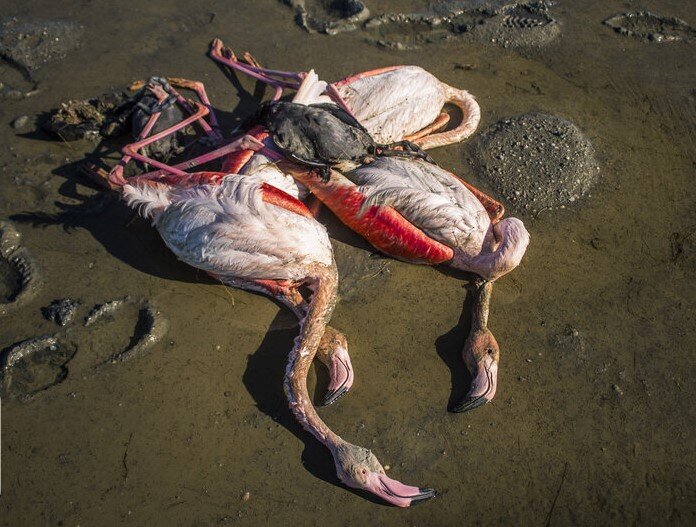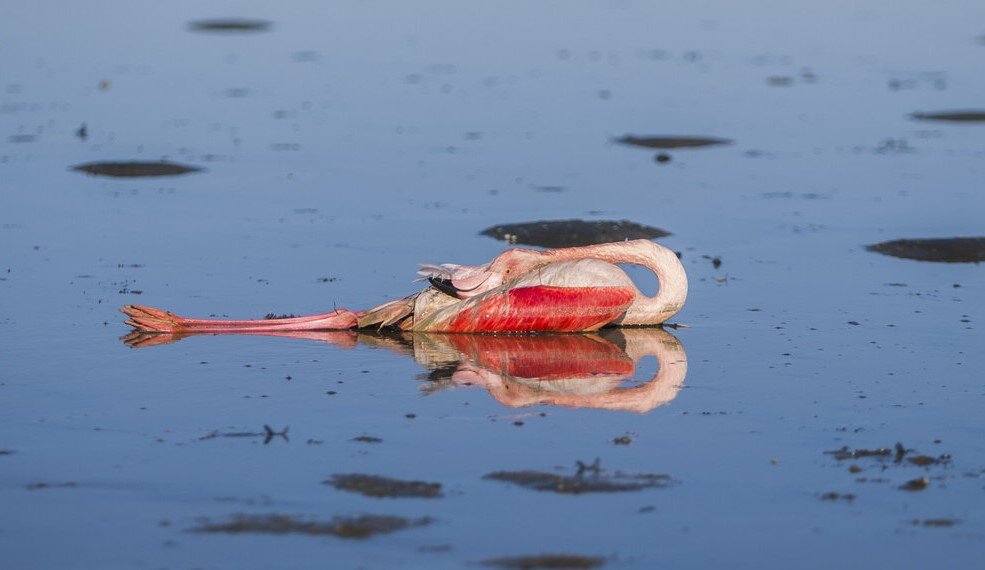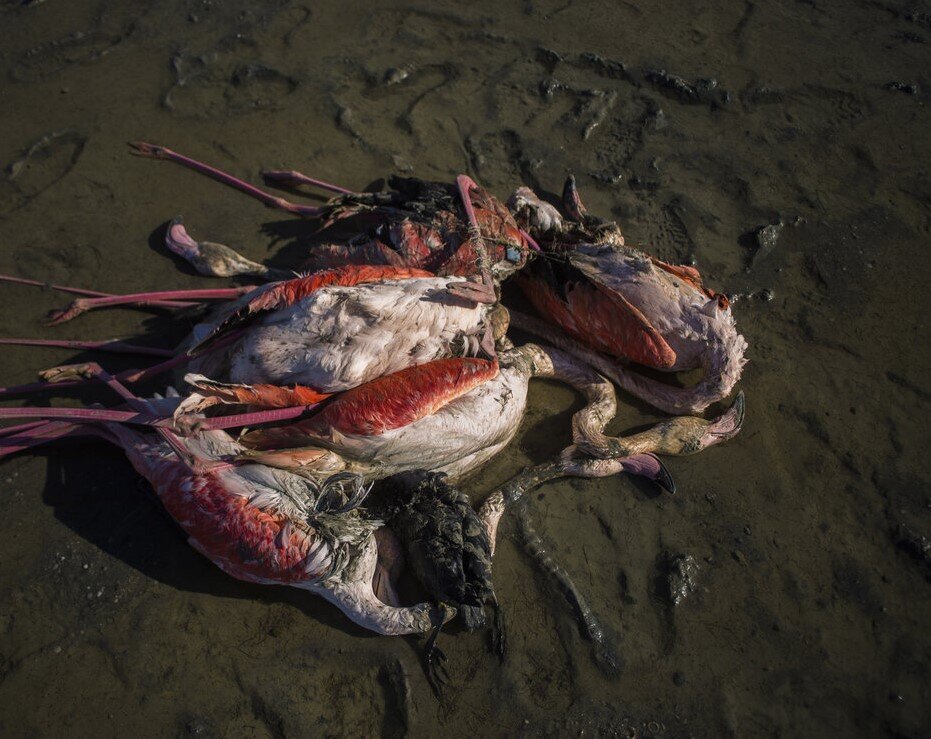Some 6,000 migratory birds die mysteriously in Miankaleh peninsula

TEHRAN – Some 6,000 bodies of lifeless migratory birds have been found so far around Miankaleh peninsula, located in the extreme south-eastern part of the Caspian Sea, IRNA news agency reported on Monday.
On the fourth day of monitoring, the number of dead migratory birds have reached 5,900, the carcasses were mostly from three bird species of Flamingo, coot and Northern shoveler that have been discovered around the shores of the Galoogah and Qalehpayan villages of Behshahr city.
The certain cause of death has not yet been announced by the veterinary organization, however, the latest result of the tests rejected any suspicion of Newcastle disease and influenza, as there have not been any symptoms such as bruising, bleeding and enlarged spleen.
Hossein-Ali Ebrahimi, head of Mazandaran province’s department of environment, told ISNA that it is decided that any hunting of migratory birds in the east of the province would be banned until further information, and in order to maintain human health, the sale of any migratory birds in Fereydounkar would also be suspended until the exact cause of the deaths is revealed.

The carcasses are being collected and buried with sanitary precautions, he added.
Ebrahimi urged all people in Mazandaran to avoid buying and consuming any wild birds in order to maintain their health.
Loss of migratory birds may be caused by human
Ali Aboutalebi, a local environmentalist said that several different species of birds such as flamingos, ducks and grebes have been killed over the past few days in the Miankaleh International wetland.
The veterinary report showed no flu or Newcastle disease reported among the dead birds, he stated, adding, the samples has been transferred to Tehran for further investigation.
“The birds may be killed by human or poisoned prey that is still being investigated,” said Aboutalebi, pointing out that no new fatalities were reported in the wetland so far.
He went on to say that in recent years, there have been a similar mysterious death in forests but the results showed that some of the birds have been allergic to a kind of alga.
Generally, the mass death of birds shows a high risk of poisoning or contamination, he concluded.

Water contamination, another possible reason
Water contamination can be considered as one of the reasons for the deaths, although we have to await test reports.
Safar Ali Makenali, deputy director of health and prevention of Veterinary Organization, has announced that massive death of birds can be caused by botulism toxin (produced by the bacterium Clostridium botulinum common in both soil and water), describing the origin of the toxin as “root of decaying plants”.
Poisoning caused by algae and plankton is being pursued as one of the possible scenarios involved in the death of wild birds in the Miankaleh wetland, but the possibility of illegal fishermen and hunters’ involvement cannot be excluded, he explained.
Sometimes the poachers are responsible for such occurrences due to being banned from hunting in these valuable habitats, he lamented.
Several times happened before that the locals burned parts of the wetland intentionally to own the area and use it for agricultural purposes, he also regretted.
Miankaleh peninsula a treasure under serious threats
The long and narrow peninsula is 48 kilometers long, and between 1.3 and 3.2 kilometers wide, which sets apart the Gorgan Bay from the Caspian Sea. Four villages namely Ashuradeh, Qezel-e shomali, Qezel-Mehdi, and Qavasatl are situated on the peninsula.
Miankaleh was designated a Ramsar site in 1975. Major habitats include wetlands, inter-tidal mud with sandy shores, shallow marine waters, forests, peatlands, and agricultural areas.
It is home to many unique Caspian birds and reptile species native to this region. It's also a very important internationally-recognized refuge for migratory birds.
The peninsula water deficits, additionally mismanagement, unsustainable agricultural practices, and severe depletion of the wells and groundwater resources have exacerbated Miankaleh peninsula’s condition.
Local people earn their income from agriculture, horticulture, animal husbandry, handicrafts, carpet weaving, traditional poultry farming and tourism.
Overgrazing, illegal hunting, fishing, deforestation and the unplanned spread of villages are some of the challenges posing threat to the region’s environment.
FB/MG
Leave a Comment